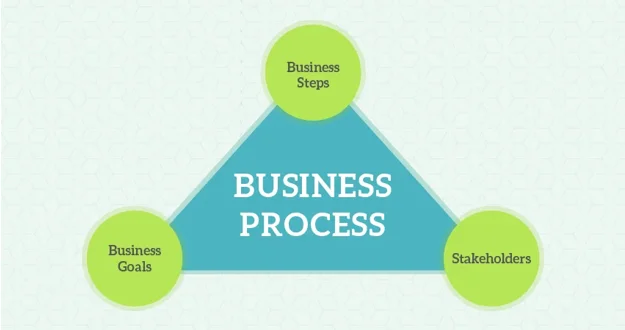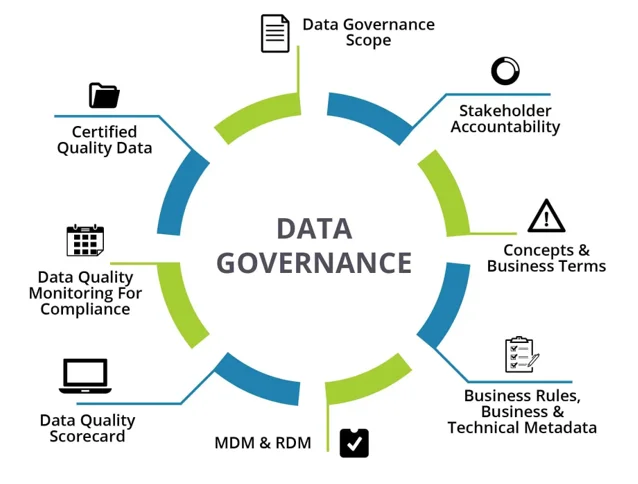So, you think managing your business data is a piece of cake? Think again. Data integration is no walk in the park—it’s a complex, yet vital aspect of modern business operations. The ability to seamlessly combine and analyze data from various sources can make or break your decision-making process. Curious to uncover the essential concepts that can help you navigate this intricate landscape and unlock the true potential of your data-driven strategies?
Key Takeaways
- Data integration optimizes business processes and decision-making.
- Unified views from various sources enhance strategic planning.
- Real-time reporting and analysis foster operational efficiency.
- Better collaboration among departments is facilitated through data integration.
Importance of Data Integration
Understanding the importance of data integration is crucial for optimizing business processes and decision-making. By integrating data from various sources across your organization, you can create a unified view that provides valuable insights for strategic planning. This integration enables you to have a comprehensive understanding of your operations, customers, and market trends.
Data integration also enhances operational efficiency by streamlining workflows and reducing manual errors. When data flows seamlessly between systems, tasks are completed more efficiently, leading to improved productivity and cost savings.
Additionally, integrated data allows for real-time reporting and analysis, enabling you to make informed decisions quickly.
Moreover, data integration fosters better collaboration among different departments within your company. When everyone has access to the same up-to-date information, teamwork becomes more effective, and projects can be executed with greater cohesion. Ultimately, investing in data integration solutions can give your business a competitive edge in today’s data-driven world.
For Example: Amazon Redshift to Google Ads integration
Integrating Amazon Redshift with Google Ads offers businesses a powerful synergy between their data warehousing capabilities and advertising strategies. By linking Redshift, a robust data warehouse solution, with Google Ads, companies can leverage the wealth of insights stored within Redshift to inform and optimize their advertising campaigns on Google’s expansive platform.
Types of Data Sources
To effectively integrate data, it is essential to identify and categorize the various types of data sources available within your organization. Understanding these different sources will help you streamline the integration process and ensure data accuracy. Here are four common types of data sources you may encounter:
-
- Internal Databases: These are databases within your organization that store structured data, such as customer information, sales records, and inventory data.
- External APIs: Application Programming Interfaces (APIs) allow you to access data from external sources like social media platforms, weather services, or payment gateways.
- Spreadsheets: Many departments use spreadsheets to manage and store data. Integrating this data can be crucial for comprehensive analysis and reporting.
- Cloud Storage: Data stored in cloud platforms such as Google Drive, Dropbox, or Amazon S3 can serve as valuable sources for integration, offering scalability and accessibility.
Data Transformation Techniques
When integrating data from various sources, implementing effective data transformation techniques is crucial for ensuring data compatibility and consistency. Data transformation involves converting data into a unified format that can be easily analyzed and utilized. Here are some key data transformation techniques commonly used in the industry:
| Technique | Description | Benefits |
| Normalization | Organizes data into a structured format | Reduces data redundancy |
| Aggregation | Combines multiple data points into one | Simplifies data analysis |
| Cleansing | Identifies and corrects errors in data | Improves data accuracy |
| Encoding | Converts data into a specific format | Ensures data uniformity |
| Tokenization | Breaks down text into smaller units | Facilitates text analysis |
ETL Process Overview
Implementing the ETL process is essential for efficiently extracting, transforming, and loading data into a target system. This process involves moving data from various sources, converting it into a consistent format, and then loading it into a destination where it can be analyzed and used effectively. Here are four key aspects of the ETL process that you should be aware of:
- Extraction: In this first step, data is extracted from multiple sources such as databases, applications, or files. This can involve identifying the relevant data to be extracted and determining how frequently this extraction needs to occur.
- Transformation: Once the data is extracted, it undergoes various transformations to ensure consistency and quality. This may involve cleaning the data, applying business rules, and standardizing formats across different datasets.
- Loading: The transformed data is then loaded into the target system, such as a data warehouse or a database, where it can be accessed for analysis and reporting.
- Automation: To streamline the ETL process and reduce manual effort, automation tools are often used to schedule and execute these tasks efficiently.
Data Quality and Governance
Understanding the importance of maintaining high data quality and governance is crucial for ensuring the reliability and integrity of your organization’s information assets. Data quality involves ensuring that the data is accurate, complete, consistent, and up-to-date. Poor data quality can lead to incorrect analysis, flawed decision-making, and regulatory compliance issues. Implementing data governance practices helps establish rules, processes, and responsibilities for ensuring data quality throughout its lifecycle. It involves defining data standards, establishing data policies, and assigning data stewards to oversee data quality initiatives.
Data governance also addresses data security, privacy, and regulatory compliance concerns. By implementing data governance frameworks, you can better manage risks associated with data handling and ensure that your organization complies with relevant laws and regulations. Regular data quality assessments, audits, and enforcement of data governance policies are essential to maintaining high-quality data and mitigating risks associated with poor data management practices.
Real-Time Data Integration
To achieve seamless synchronization and instant access to up-to-date information, real-time data integration plays a pivotal role in modern organizational operations. When your business adopts real-time data integration, you benefit from immediate insights and decision-making capabilities. Here are four key aspects to consider:
- Speedy Decision-Making: With real-time data integration, you can make informed decisions based on the most current information available, leading to agility and competitive advantages.
- Improved Customer Experience: By accessing real-time data on customer interactions and behaviors, you can personalize services and interactions, enhancing overall customer satisfaction.
- Enhanced Operational Efficiency: Real-time integration allows for streamlined processes, reducing manual interventions and ensuring data consistency across systems in your organization.
- Proactive Issue Resolution: Detects and addresses issues promptly as they occur by monitoring data in real-time, preventing potential setbacks and maintaining smooth operations.
Process mining, a technique that involves analyzing event logs to discover, monitor, and improve processes, can be seamlessly integrated into real-time data integration strategies. By combining process mining with data integration, you gain valuable insights into process efficiency and identify opportunities for optimization in real-time. This synergy enhances agility, operational efficiency, and competitiveness in today’s dynamic business environment.
Cloud Data Integration Solutions
Cloud data integration solutions offer organizations a seamless way to connect and synchronize data across various cloud-based platforms. By leveraging cloud data integration tools, you can streamline the process of combining data from different sources such as software as a service (SaaS) applications, databases, and more. These solutions eliminate the need for manual data handling, reducing errors and enhancing efficiency in managing your data.
With cloud data integration, you can easily extract, transform, and load (ETL) data from multiple sources into a centralized data warehouse or data lake. This enables you to gain a holistic view of your data, facilitating better decision-making and enhancing overall business intelligence. Additionally, cloud data integration solutions provide scalability, allowing you to adapt to changing data volumes and business needs effortlessly.
Moreover, these solutions often offer connectivity to a wide range of cloud services, ensuring compatibility with popular platforms such as Salesforce, Amazon Web Services (AWS), Microsoft Azure, and Google Cloud Platform. Embracing cloud data integration empowers your organization to harness the full potential of your data assets and drive innovation in a highly competitive digital landscape.
Benefits of Data Integration
Harnessing the power of data integration can revolutionize the way your organization operates, enhancing efficiency and decision-making capabilities. By seamlessly combining data from various sources and systems, you can unlock a plethora of benefits that will propel your business forward.
Here are four key benefits of data integration:
- Improved Decision-Making: Access to integrated data allows for a more comprehensive view of your organization, enabling you to make informed decisions based on real-time insights.
- Enhanced Efficiency: Streamlining data processes through integration eliminates manual tasks, reduces errors, and increases productivity across departments.
- Better Customer Experience: Utilizing integrated data enables personalized customer interactions, leading to improved satisfaction and loyalty.
- Cost Savings: Data integration reduces redundancy, eliminates the need for multiple systems, and optimizes resource allocation, ultimately saving your organization money in the long run.
Embracing data integration can be a game-changer for your business, providing a competitive edge in today’s data-driven landscape.
Data Integration Best Practices
Implementing effective data integration practices is crucial for maximizing the value of your organization’s data assets. To ensure success, start by clearly defining your data integration goals and aligning them with your business objectives. Identify the sources of data within your organization and establish a solid data governance framework to maintain data quality and consistency.
When implementing data integration, consider using automation tools to streamline the process and reduce manual errors. It’s also essential to establish data security measures to protect sensitive information during integration. Regularly monitor and test your data integration processes to identify and address any issues promptly.
Collaboration between IT and business stakeholders is key to successful data integration. Ensure that everyone involved understands the importance of data quality and consistency. Document your data integration processes to facilitate knowledge sharing and troubleshooting.
Lastly, continue to evaluate and refine your data integration practices to adapt to changing business needs and technological advancements. By following these best practices, you can harness the full potential of your data assets and drive informed decision-making within your organization.











